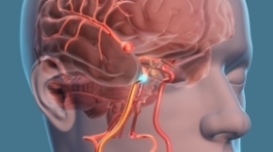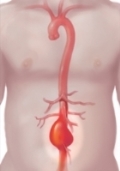
Cerebral (Brain) Aneurysm Treatment
What Is an Aneurysm?
An aneurysm is a localized dilation of the wall of a blood vessel. Aneurysms are most prominent in the aorta but can also occur in peripheral vessels and are fairly common in the lower extremities of older people. The cause of aneurysm can be a result of aging or disease and it can be congenital which means born with the defect.
The symptoms of an aneurysm depend on the location of the aneurysm with the common sites at the abdominal aortic artery, the intracranial muscles, and the aorta. Note that many aneurysms are without symptoms and can only be discovered by feeling or on x-ray films during an examination. However, when symptoms do occur, they may include a pulsing sensation and pain if the aneurysm is pressing on internal organs. A ruptured aneurysm produces sudden and severe pain. In other cases, an aneurysm may leak blood causing pain without the rapid deterioration characteristic of a rupture. Clots may often form in aneurysm which creates danger.
There are some tests which can be done to detect an aneurysm. First off is the angiogram which is an x-ray exam of the arteries, veins or heart chambers. There is the MRI which is a diagnostic technique that uses the response of atoms to a strong magnetic field to produce cross-sectional images. The Spinal tap is another way to diagnose aneurysm which is a puncture of the spinal cavity with a needle to extract spinal fluid for diagnostic purposes. Ultrasound uses high-frequency sound waves to produce an image of an organ. Echocardiography may be used which uses ultrasound waves to visualize structures within the heart. Lastly, x-rays may also be obtained.
 To treat aneurysms, drugs may be prescribed to lower the blood pressure
and to reduce the risk of rupture. However, some aneurysms such as the
abdominal aneurysm must be treated surgically, especially if it is large
and increasing in size. Enlarging thoracic aneurysm should also be considered
for surgery. Finally, a dissecting or ruptured aneurysm requires immediate
emergency surgery.
To treat aneurysms, drugs may be prescribed to lower the blood pressure
and to reduce the risk of rupture. However, some aneurysms such as the
abdominal aneurysm must be treated surgically, especially if it is large
and increasing in size. Enlarging thoracic aneurysm should also be considered
for surgery. Finally, a dissecting or ruptured aneurysm requires immediate
emergency surgery.
For more information on Pomona Valley Hospital Medical Center's Stead Heart & Vascular Center, please call 909.865.9858.
